This story is part of The Coffee Club Centenary Series, helping celebrate 100 years of netball in New Zealand.
By Margaret Henley
High profile women in late 19th century New Zealand who worked to break down gender-defined barriers in society have long been recognised and celebrated in our history. These first wave feminists challenged the gender-based political, economic, legal, and educational norms of their time to improve the lives of New Zealand women at every level of society.
Following in their footsteps in the early half of the 20th Century, is a veritable army of women who were not as high profile as the gender-barrier breakers like suffragist Kate Sheppard, or New Zealand’s first woman lawyer, Ethel Benjamin, but who were nevertheless the societal ‘game changers’ of their generation.
Although they wouldn’t have thought of themselves in this way, these women were in effect ‘stealth feminists’ who quietly rolled up their collective sleeves and made things happen. Their aim was the same as the generation of women pathfinders before them – to improve the quality of life and to create new opportunities for women and young girls. In doing this they proved that women could still be wives and mothers while actively participating in political, social and community life outside of the home.
Many were trained schoolteachers. Others learned their management, administrative and organisational skills through volunteer labour in a formidable array of community-based organisations such as the YWCA, Girl Guides, Plunket Society, Victoria League, Temperance Union, and the growing number of sports organisations aimed at providing young adult women with recreational outlets in the years between leaving school and marriage.
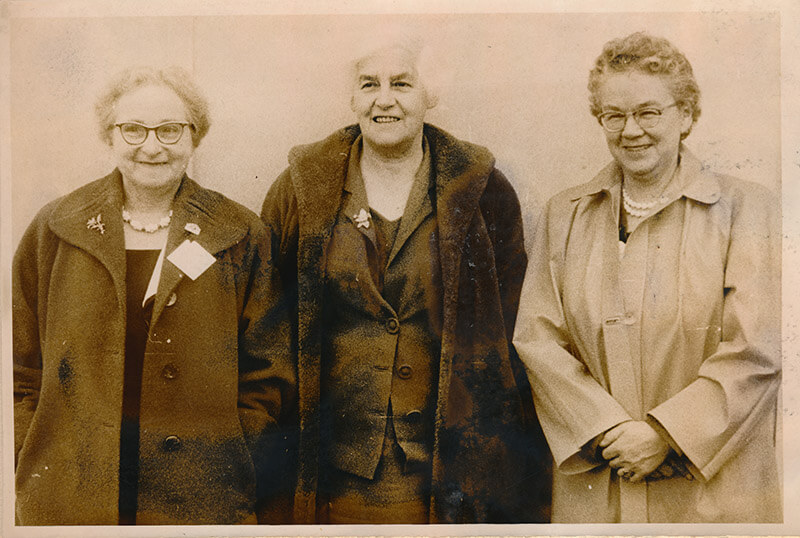
Photo taken at Rotorua National Tournament 1958
(NNZ Archive)
Women, such as Irene McInnes, Myrtle Muir and Betty Armstrong, who got together in 1924 to form the New Zealand Basket Ball Association, epitomised the work ethic of this female volunteer workforce through the challenging years of the Great Depression and World War II. They were fuelled with a fervent belief that team sport - and outdoor basketball in particular - had the capacity to enrich the recreational and social lives of young women and enhance their physical and mental wellbeing during a period of rapid social change.
Irene McInnes (née Black) – Founding President NZBBA
Irene Black, known as Rene in her younger years, grew up in a family who were outward looking, valued education and who were very active in the community, sporting and political life of Dunedin.
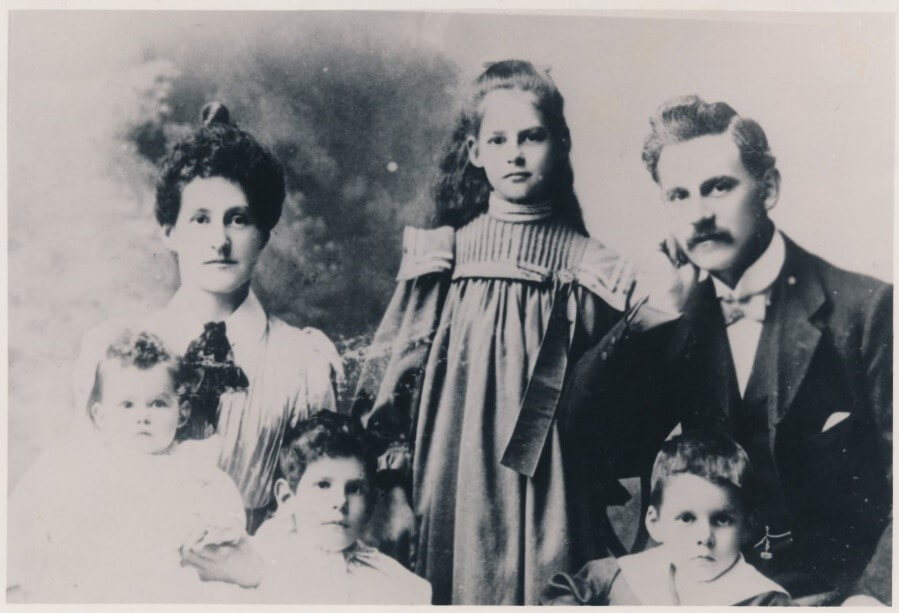
(Photo: Jocelyn Jackson)
Her father, Robert Sheriff Black, was a high-profile Dunedin businessman exporting frozen rabbits and rabbit skins which became the largest business of this type in the world at that time. He was well travelled and a keen sportsman excelling in curling, tennis and golf. Alongside his demanding business life, he was energetically engaged in local body politics. He was elected as a councillor to the Roslyn Borough (1911) and Dunedin City Council (1912-19) followed by two terms as Mayor of Dunedin during the early years of the Depression,1929-1933.
Robert Black received many public accolades for his work in bringing prosperity to Otago, and was described in the NZ Truth 1937, as someone who ‘combines with business ability the art of saying the right thing in the right place’.
This was a talent Irene McInnes obviously inherited from her father, along with her ability to perform confidently in front of an audience which was in evidence throughout her school years and into her adult life. Her ability to network, communicate and motivate others contributed to the success of her long career holding an impressive range of leadership roles in community organisations.
She was a high academic achiever throughout her school years and attended Christchurch Teachers Training College, 1912-1914. As part of her teacher training, she passed university courses in Maths, Inorganic Chemistry, Geology, French and Physics, with considerable ease to qualify as a science teacher on the eve of the 1st World War. During the war she did her country service teaching at Waitati Primary School, Blueskin Bay, then moved back into Dunedin to take up a position as a Maths and Science Mistress at Columba School for Girls. She was an active member of the Dunedin YWCA during these years, and it is likely that this is how she would have first met Myrtle Muir, who was an officeholder in the Christchurch YWCA around this time.
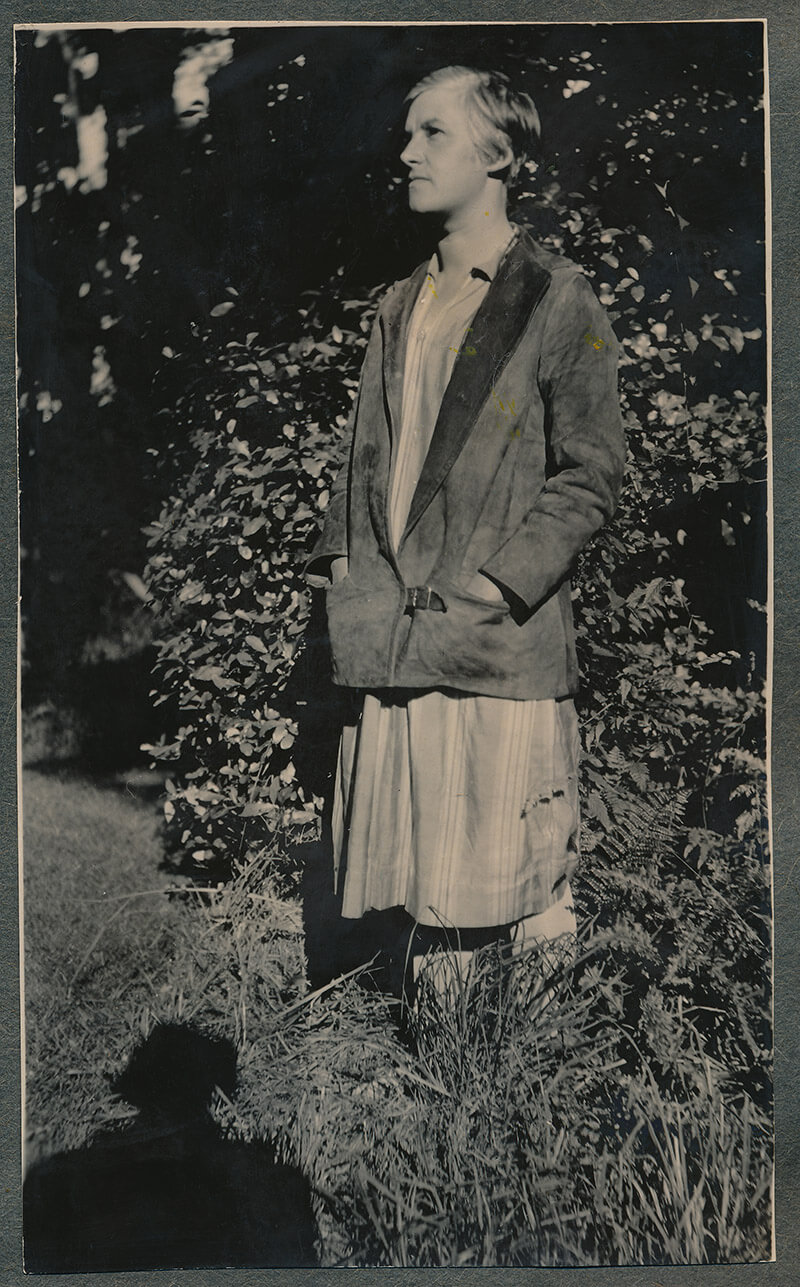
(Photo: Jocelyn Jackson)
The formation of the NZBBA
In 1919, Irene married Ralph McInnes, an accountant with Wright Stevensons, and by 1923 she was living in Wellington and continued her commitment to the YWCA movement. It was here that she became aware of the rapidly increasing numbers of young adult women wanting to continue playing basketball after they left school but there was no formal organisation or recognition of the sport outside of the education system which enabled this to happen.
Although pregnant at the time with the first of her four children, she was galvanised into action. She wrote to the five centres in New Zealand whom she knew were playing basketball and invited them to meet with the aim of forming a national organisation. The meeting was held in her home, 56 Rongotai Terrace, Kilbirnie, on 21& 22 May 1924.
The delegates in attendance were:
Wellington: Mrs Irene McInnes & Miss Betty ArmstrongCanterbury: Mrs Myrtle Muir & Miss ArcherAuckland: Miss Anderson.
Otago were unable to attend and sent their apologies with a copy of their rules and suggestions for a constitution. A young Wellington representative player, Dorothy Crumpton, was asked to attend the meeting as the minute secretary which she carried out with admirable efficiency and accuracy.
The group voted to create the New Zealand Basket Ball Association (NZBBA - changed to NZBA in 1927) and elected their office holders. A natural organiser with an already proven leadership track record, Irene McInnes was the obvious choice as President, with Myrtle Muir, seven years her junior, voted Vice-President. In a press interview years later, McInnes would modestly joke that ‘they couldn’t do anything else – the meeting was in my house’ (NZBA scrapbook, c1932).
The creation of the NZBBA in 1924 became the first national association for outdoor basketball/netball to be formed internationally. It was also the only sports body in New Zealand at that time to be run exclusively by women, although men made a strong contribution to the sport from the early days, particularly as game day officials and umpires. Irene McInnes continued to umpire weekend games through these early years alongside her duties as President of the Association, as did Myrtle Muir in her role as Vice-President and Betty Armstrong who provided strong leadership for the Rules Committee and the Referee’s Association.
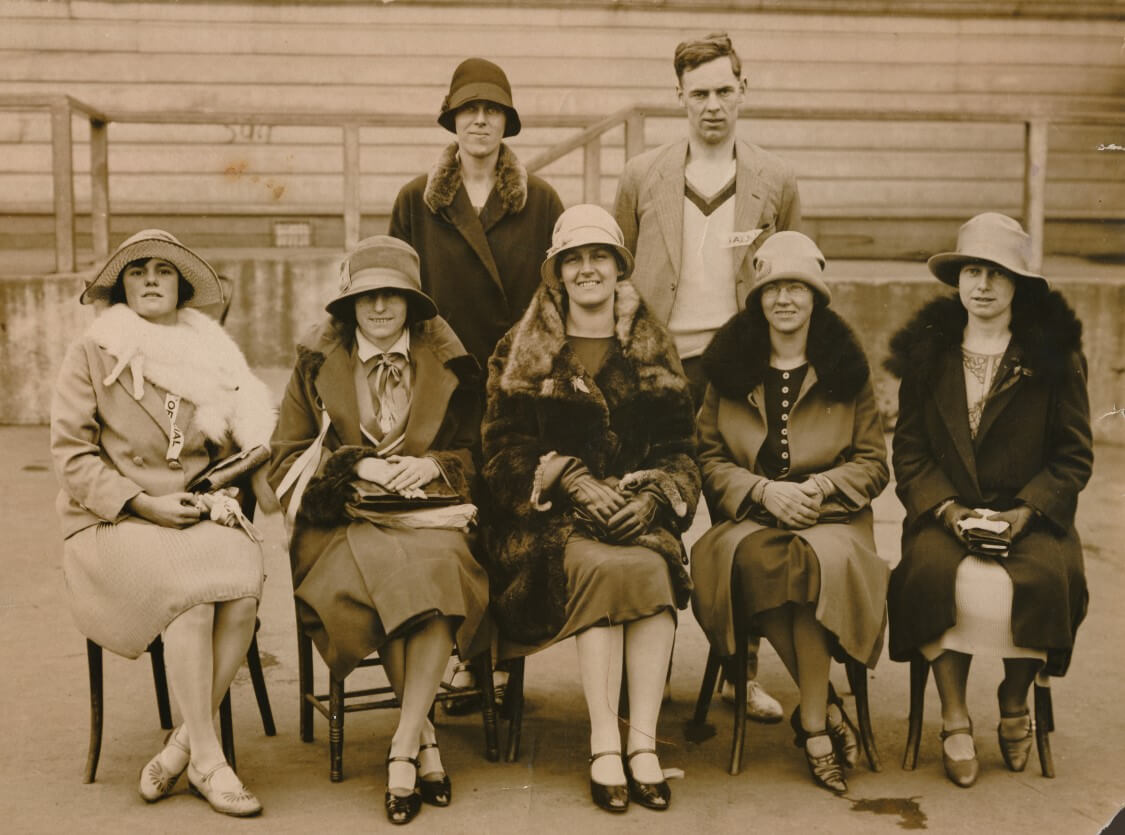
(NNZ Archive)
Despite the McInnes family relocating to Invercargill in 1925, she was still at the core of promoting and growing all aspects of the sport. She formed the Southland Basketball Association and created a senior competition to enable young women in the region to keep playing the sport once they left school.
She also began to travel throughout the country, often accompanied by Myrtle Muir or Dorothy Crumpton, to encourage existing basketball centres to affiliate with the national body and to promote the expansion of the game.
She was very adept at gaining the attention of local press wherever she went. In these articles she extolled the game as being:
“...better than any other for girls and young women, especially those engaged in offices and factories who have not much opportunity in keeping themselves in hard physical form.” Wairarapa Age, 1 September 1925.
Although being a hockey player herself through her school years she regularly reinforced her belief that:
“...Basket Ball is the best winter game for girls, not being as rough as hockey. The player combining energy with reason in a limited area, which prevented it from becoming too strenuous.” Southland Times, 12 September 1925.
She further bolstered her argument that basketball would soon become the national game for girls in New Zealand using evidence from the Department of Education:
“It has been said by school inspectors that the average height of the primary school girl has quite noticeably increased since the inauguration of Basket Ball.” Southland Times, 12 September 1925.
The opinion at the time was that the upright stance of a basketballer gave a young woman a much healthier posture in comparison to the hunched position of a female hockey player.
1932 National Tournament Film
By 1932, Irene McInnes had handed over the Presidency to Myrtle Muir. They had worked tirelessly as a management team to unite basketball playing centres and achieve national game status for the sport. McInnes was made the first life member of the NZBA in recognition of her vision and outstanding leadership during the eight years of her presidency.
An increasingly confident NZBA, despite the severe financial constraints of the times, made the decision to invest the large sum of £20 in the making of a ‘moving picture of teams in play for Publicity Purposes’ (NNZ Archive) at the National Tournament to be held in Invercargill that year.
This film, recently rediscovered and restored, was to travel around the country for the next 20 years as the only available moving images of how the unique New Zealand 9 a-side game was played at senior level. It became a highly prized coaching aid and was particularly valuable for the more isolated areas of New Zealand where travel, particularly for women, was still very limited.
The added bonus was that the final scene of the film was shot outside the Winton Railway station as the players and officials from all round the country were farewelled. As the camera pans across the excited crowd, Irene McInnes and Myrtle Muir can be clearly seen in the foreground.
Vision of Irene McInnes and Myrtle Muir, 1932 Dominion Tournament film (40 seconds) no sound.
The complete 1932 Dominion Tournament film (25 minutes). Please note, this film does not have a soundtrack.
Public recognition of Irene McInnes’ wider standing in the sports community
1938 was another significant year for basketball and brought increasing recognition of Irene McInnes’ leadership qualities.
Through her work founding and developing the NZBA and her extensive volunteer work in other community organisations she had become well known for her organisational skills and social vision. She was one of twelve sports leaders throughout the country selected to be a member of the newly formed National Council of Physical Welfare and Recreation – the forerunner of the Hillary Commission and now Sport NZ. The aim of the National Council was to encourage the uptake of sport and recreation and to support the development of community-based sports facilities.
As can be seen from the profile of Irene McInnes, which was published in regional newspapers at the time, she was an ideal candidate.
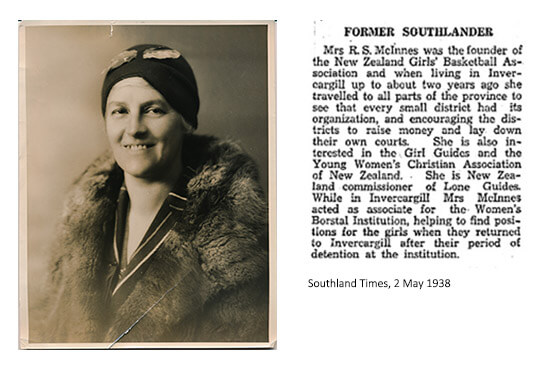
Later in the same year, the NZBA selected her as a delegate to accompany the first New Zealand Basketball team to compete at an inter-state competition in Victoria, Australia. This was the start of New Zealand and Australia more actively engaging in the process of thrashing out an international set of rules so all outdoor basketball/netball playing countries could compete on the same footing.
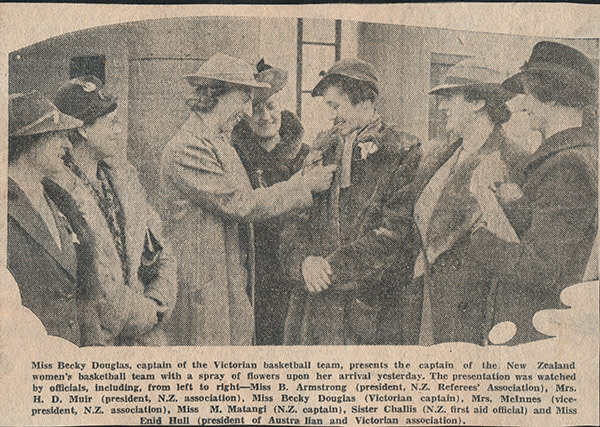
Other Community Roles
Although McInnes was actively associated with basketball all her adult life, she also was a major contributor to many other community organisations. As well as the YWCA where she served as a board member for many years, she was very committed to the Girl Guide Movement and was appointed the Commissioner for the Lone Guides Movement New Zealand, 1935-1949.
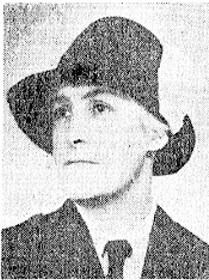
(Dominion, 12 June 1937)
Following the death of her son Paul who was killed at Monte Casino, Italy, during WWII, she became an active member of the Gold Star Mothers’ Club which was set up to support women who lost sons during the First and Second World Wars. She was also a member or office holder at various times in the National Council for Women, Plunkett Society, Repertory and Dramatic Societies in Invercargill and Wellington and stood for Southland local body elections in 1935.
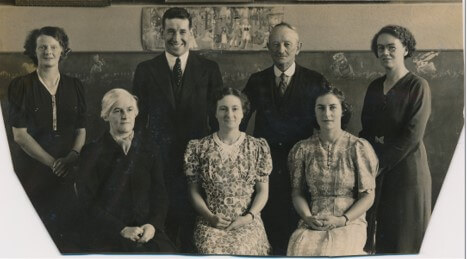
Irene McInnes and Betty Armstrong seated front left, Myrtle Muir standing first right. (NNZ archive).
She continued her life long devotion to New Zealand and Wellington basketball alongside Myrtle Muir and Betty Armstrong. Despite the public accolades that increasingly came her way she was always adamant that she did not create the NZBA on her own and insisted that the same regard was given to the other women who worked alongside her.
She took unmarried mothers into her home to support them through their difficult months and during the 1950s she owned a bookshop for a number of years in Newtown. She was a very well-known bridge player and served for 20 years as the secretary of the Wellington Bridge Club.
Irene McInnes’ family legacy
Her granddaughter, Jocelyn Jackson, remembers her ‘Nanny’ as a woman with a strong personality and that she was certainly not a conventional grandmother of the time. As a young woman McInnes and a female friend cycled around the South Island. She smoked cigarillos or cigarettes in a long cigarette holder. She adored westerns and was a regular patron at the Avant Garde, ‘Susy’s Coffee Lounge’ in Willis Street during the 1960s. As the owner of a very smart Vauxhall Velox, she developed a fearsome reputation for sweeping out of the drive of her Moxham Ave home, Hataitai, with no regard for other traffic on the road.
Irene’s descendants, according to Jocelyn Jackson, ‘have been brought up in sporting households and each generation has been encouraged to participate no matter what their ability’.
The following list by no means covers all the sporting achievements within the wider family but is indicative of the McInnes sporting legacy:
- Jocelyn’s mother, Alison Wiren, was a Wellington Representative netballer.
- Her uncle Paul McInnes a competitive swimmer.
- Her brother, Dale Wiren, NZ U16 & U18 Badminton Champion.
- Her son, Nick Jackson, U20 x 1500m champ & received a US Sports Scholarship. His children are high achieving athletes in the US.
- Her cousin Keith Gorringe - Auckland and NZ hockey Rep and NZ Men’s Hockey Coach.
- Her nephew, Quentin Rew – NZ’s most successful race walker at 3 Olympic Games, 2 Commonwealth Games and 6 World Athletic Championships.
- Jocelyn’s granddaughters are netballers and 2 row competitively and 1 plays rugby.
Irene McInnes’ contribution to the foundation of NZBA and the rapid growth of the game to achieve national status is inestimable but it is fitting that the last words as to the significance of her contribution to New Zealand society are left to her family:
“As far as the legacy Irene has left the family, we are all extremely proud of having such an amazing woman to call our grandmother and great grandmother.
Snippets of her achievements circulated when we were children, but it wasn’t until I helped research her life for my granddaughter, that we realised just what she had contributed to help the betterment of women’s lives in many aspects of the community.”
(Jocelyn Jackson, 20 February 2024).
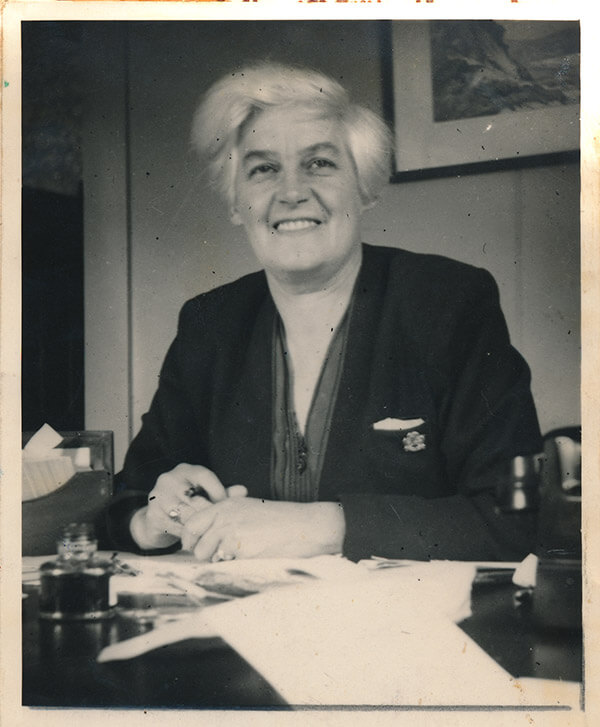
Notes:
- The game is referred to as ‘basketball’ or ‘outdoor basketball’ for historical accuracy throughout this article. It was not changed to ‘netball’, in line with all other netball countries, until 1970.
- Should you have any information, artifacts or photographs covering this early era of netball’s history that you would like to share, or contribute to the NNZ archive, please contact Margaret Henley,
This email address is being protected from spambots. You need JavaScript enabled to view it. - Margaret Henley’s research is funded by a Royal Society Marsden Grant. It is part of a larger netball-focused project entitled: Netball’s Enduring Role in the Intergenerational Health and Wellbeing of Aotearoa Women.